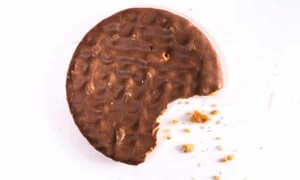Toasters, kettles, stoves, ovens…


Refrigerators use electricity to move heat from inside the box to outside the box.
Wait till OP finds out that most of cooking is putting heat into food.
And taking water out!
Or sometimes putting it in
Oh yeah! Like soup! Love soup!
Hell yeah! I haven’t had soup since Wednesday. I gotta make me some more soup.
Reminds me of that lemming who absolutely hates soup haha
Dry the wets, wet the drys, dry the wets, wet the dry, dry the wets, wet the dry, the dust the wets Spagettii
It’s too bad that there’s no way to recapture the waste heat from an oven/range in the summertime. Like to heat our water when the bread has finished cooking. Maybe future homes could run a recirculating water pipe behind the oven you could switch on and off?
what you’re describing is an oven with a heat pump. industrial-grade ovens like this exist, but they don’t really exist in the home appliance market as the amount of energy recaptured at that scale would be negligable. it’s easiere (and cheaper) to make ovens more energy efficient in other ways.
there are a number of other home appliances (washers, dryers, and dishwashers), however, which use inverter heat pumps to recapture/recycle heat, thus increasing energy efficiency by quite a lot.
Not as fancy as heat pumps but our kettle boils one cup at a time and the boiling chamber is under the water tank. Some of the wasted energy goes to warm up the water in the tank meaning less energy is needed for the next cup. It’s probably not that efficient but it’s better than nothing.
Considering that heat rises, I’d be pretty surprised if the heating element for an electric kettle was anywhere but beneath the tank. It wouldn’t work very well otherwise, unless you used a much more expensive method of heating it all around., But even then, there would still be heating elements underneath.
A good way to improve efficiency there, would be to insulate the tank to reduce heat dissipation in the first place.
I don’t think I explained very well. It has two tanks. Storage water tank and a boiling tank which is under the storage tank. It draws water into the boiling tank which is 1 cup size. Once it’s hot it shoots the water out of the spout into the cup. Water from the storage tank fills the boiling tank.
Oh, I see. Yeah, I misunderstood. Thanks for clearing that up.
You’re reusing the heat to warm the house normally. Obv, you don’t always want that, so you may opt to limit using the oven in summer for example, as it is the one which runs the longest.
I don’t want to have to possibly call a plumber and electrician to fix my oven though.
I like your idea, but I think a tankless water heater would save more energy, and in that case you don’t need hot water just sitting around.
If you really think about it. All any appliance does is turn energy into heat.
Saying that all appliances turn energy to heat is true, but saying that all appliances do is turn energy in to heat is not. While heat is still a byproduct, lots of appliances make things move as well.
For heat pumps, the thing they’re moving is heat.
They’re really moving refrigerant. It’s just that the refrigerant keeps changing temperature (heating up at one end of the journey and cooling down at the other end).
More specifically, we force it to undergo phase changes under different pressures, and in doing so it absorbs/releases latent heat in the air. It’s converting latent heat to sensible heat.
And what is that movent? Eventually decays into heat.
I understand that, and called it out in my comment. Heat being a byproduct of movement does not mean that a device that creates movement “only” creates heat. That’s like saying all drink dispensers only dispense piss, because what does it eventually turn in to?
Why stop at appliances? By that logic, humans are nothing more than self-propelled heaters. The whole universe is nothing but shifting pockets of heat like the ripples of a pond bouncing back and forth until they all disappear.
Such nihilism.
I read somewhere that when engineers are designing home heating/ cooling systems, they factor in the number of humans in a home as 100 watts each. I think dogs are 50 watts.
Are we not?
We also have the ability to think sometimes
Overrated apparently
There was a paper floating around about a decade ago. Basically it was asserting that biological life is the natural outcome of entropy itself. Bc living beings are especially good at increasing entropy over time. Not sure if it was credible but a fun idea nontheless
False. My water filter pitcher does not turn energy into heat.
(Ok, fine, it uses gravity to move the water through a filter, which technically converts some of the potential energy of the water into heat through friction, but that’s not something the pitcher does, that’s something the earth does that the pitcher uses to its advantage.)
Not an appliance, that’s a tool.
I would say it falls under definition 2b here:
Oooh I love debating semantics. Is a sieve an appliance? A slotted spoon? They both work in the same way as your water filter.
Common usage of the quantifier kitchen appliances indicates use of electricity. I would describe my electric coffee grinder as a small appliance, but not my mortar and pestle.
Yes, kitchen appliance usually means powered by gas or electricity, but if something is powered by gravity, it’s still an outside power source. So that’s what I would say the difference is.
A mortar and pestle is powered by your own movement. A filter pitcher is powered by gravity. So I would so that it’s an appliance because of that. A sieve and a slotted spoon are a harder delineation, since they both are partially powered by gravity. I would say that because they have no moving parts, they are not machines, and so may not be considered appliances, but that’s only my own thoughts, not a dictionary definition requirement. Topologically, a sieve and a filter pitcher are basically the same thing. So that’s a conundrum.
deleted by creator
And in the summer, we look at all that and say “no thanks, I’m going to go outside and use good old fashioned fire.”
Just heard the quote, ‘Toasters weren’t invented to make toast, they were invented to sell electricity.’
That’s silly, they really don’t use much power in the grand scheme of things. It uses a lot of power for a very short period, a small blip. Big power consumption comes from things that run often or all the time. It compounds.
Where I live everything is electric for the vast majority of people. The norm here is to have electric stoves and electric water heaters. Even heating houses is mainly done through electricity.
I was so surprised to learn as a teen that this is not the norm everywhere, and that some people are actually still lighting fires in their houses to cook food.
A gas hob is so much better than an electric hob.
You should try induction cooking.
Sure. It’s always “better” to burn stuff to generate more pollution in the air that you breathe, and also continue to depend on fossil fuel.
https://www.cbc.ca/news/science/gas-stoves-air-pollution-1.6394514
And “better” depends on your sources of energy and what your goals are. Like most people here, I grew up with an electric stove and we are just used to cook this way. It’s just an adaptation. I use gas stoves in camping and in my cabin, and I’m so used to an electric one, that I hate using gas.
Electricity here is cheap and clean so if you want to eat hot and warm food and minimize the impact on the environment, and your bank account, you should probably get used to cooking with electricity. There’s also different technologies. My mother prefers a glass-ceramic stove but induction stoves are also getting pretty popular. Or you can pay more, pollute more, continue to breathe the results of combustion and keep buying fossil fuel to cook “better”. I consider less pollution for millions of people, and less reliance on the oil & gas industry to be “better”.
For more facts about this, you can just watch an hour long video on that very topic from Technology Connextras.
Electric to heat has really good energy conversion efficiency.
I concluded a while back that if you make some sort of miracle machine that handles both heating stuff and water stuff you can replace a ridiculous amount of appliances and much other stuff too. Everything from a stove to a car wash. Soldering irons and showers too.
Like an automotive carpet shampooer?
That too
And that most of these appliances are pretty much irrelevant in the modern world, just staying around because people think they need them. A convection oven with an induction stove on top replaces microwave, kettle, toaster etc.
EDIT: Not sure why I’m getting downvoted. It’s obviously not ideal for every situation. Like for example I have a kettle, but only because I can set i to hold a specific temperature for when I brew coffee (94°C) and tea (80°C) which would be less convenient to do on my induction stove, even though it boils water faster.








